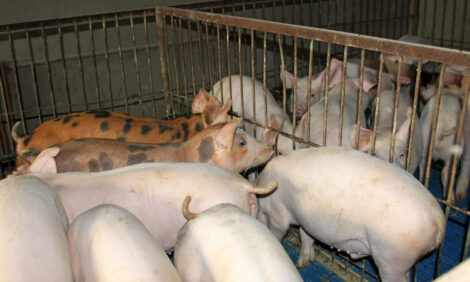



Efficiency Can Offset Higher Feed Costs
US - With record prices for corn and soybean meal, many pig producers are looking at alternative feed sources. However, improving the efficiency of current feeds is where producers should look to cut costs, says a University of Missouri Extension swine nutritionist.Alternative feed sources require more storage and additional handling, says Marcia Shannon, extension state swine specialist and associate professor in animal sciences at the MU College of Agriculture, Food and Natural Resources. Alternatives may also be less efficient because of differences in nutrition quality.
"Any of the alternatives, whether it is peanut meal, rice, cereal grains or other byproducts, are going to be much higher in fiber and lower in energy. So the diet might be cheaper but you are going to have to feed more of it," Ms Shannon said. "What I want producers to look at is more fine-tuning of their feeding."
Another important factor is marketing weight. Ms Shannon says marketing at lower weights is a huge advantage in reducing costs and losses per head, and packers are helping by reducing the low-weight dock.
"With $7.50 corn it might cost you an extra $5.75 to feed that hog another 10 pounds, and with a $78 market price you're only going to get $2 back," she said. "So you are going to lose $3 a head just by taking that pig an extra 10 pounds. If you add 50 pounds, you're going to multiply that fourfold."
In August, lighter market weights for hogs were starting to be seen, she said. Producers are marketing hogs about 10 pounds lower, and Ms Shannon thinks they could drop another 10 pounds and stop more of the red ink in hog production.
Another practice to improve feed efficiency is using synthetic amino acids. Traditionally, pork producers fed three pounds per ton of synthetic lysine across all phases of production, she said. Today, however, high inclusion rates of synthetic amino acids may be more economical.
"Research has shown that we can feed four to six pounds of synthetic lysine per ton, although at those levels you need to add some synthetic threonine and synthetic methionine," Ms Shannon said. "Those two are relatively cheap in cost now, so when you are getting up there at 200 pounds you definitely need to be feeding four to 4.5 pounds of synthetic lysine. It's much cheaper and a more economical least-cost diet than feeding three pounds per ton."







